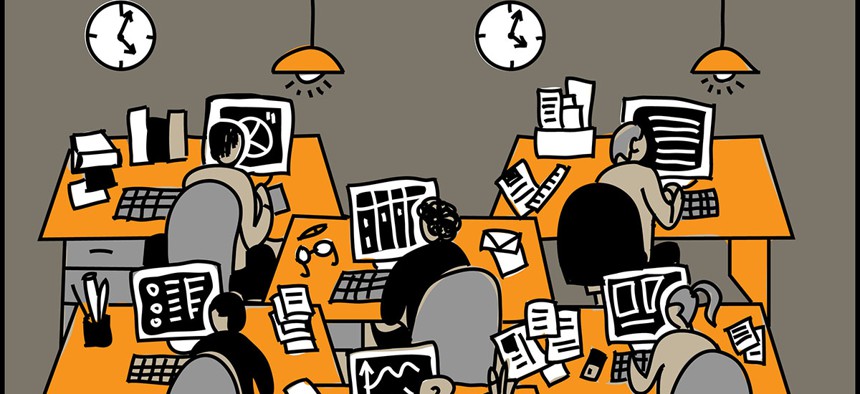Neuroscientists Have Figured Out Why You Can’t Concentrate at Work

Chief Crow Daria/Shutterstock.com
Try writing a report in a noisy, uncomfortable place with the smells of the office microwave wafting over to your desk, and the importance of other senses becomes clear.
Even though most people think about themselves as primarily visual beings, neuroscience reveals a complex “connectome” of brain cells that connects all of our senses. Try writing a report in a noisy, uncomfortable place with the smells of the office microwave wafting over to your desk, and the importance of other senses becomes clear.
As a neuro-architect, I study how the brain processes all of our senses when we experience design. After all, design isn’t just aesthetic: It also includes the senses of sound, touch, and smell, as well as integrating information we receive from our sense of balance, pressure, pain, and the position of our body within a given place. Together, the perception of all these senses informs our response to architecture—and our attention.
This is particularly true of sound. Studies at the Human Experience Lab at Perkins+Will have revealed how important workplace acoustics are to performance and satisfaction, and that good acoustic design equals good business. Our 2016 study of brainwaves showed how different sound environments are associated with distraction and interruption in the workplace. The results also showed us statistically significant changes in creativity scores associated with different acoustic conditions: Workers reported that they were more creative when office noise was masked by broad frequency “white” noise. (However, the use of white noise may also influence speech intelligibility and attention.) We are now developing new applications that include psycoacoustics—the psychology of sound—in real time to build our understanding of the impact of sound on the human experience.
Loud noise has become one of the greatest irritants at work. One study showed that 99 percent of employees reported that their concentration was impaired by various types of office noise, especially telephones left ringing at vacant desks and people talking in the background. (Researchers also found no evidence that people become used to these sounds over time.) According to another study, 68 percent of those surveyed become frustrated when sound levels creep just above normal conversation, and they also reported increased fatigue and difficulty in concentrating.
These findings are no surprise to scientists who map the amazing neural networks that process sound. These brain structures control the mental and physical processes required to achieve focus, concentration, and be creative. Often the reason why sound distracts us is because unwanted sound competes with speech and other important signals. The cochlear hearing organ that transforms sound waves into neural signals also receives input from many parts of the brain about where sound originates, what sound to attend to, and what sounds are distracting.
If the level of background noise closely matches or is louder than the sound level of speech, it is harder to hear accurately. If nearby speech is not relevant to your team or your work, it becomes even more distracting. In addition, if you are listening in a second language, then speech needs to be even louder than the background noise.
To increase concentration and collaboration in the workplace, we must consider more advanced acoustic solutions that meet the needs of the modern workforce. For example, teams must have spaces that support the variety of cognitive tasks they perform, as there is not a ‘one-sound-fits-all’ solution. For example, introducing white noise in all areas will mask all conversations, so it needs to be applied strategically. Office spaces that have variety of individual, small group, and collegial areas can help the issue, especially when un-assigned seating was enforced so individuals can choose where they wanted to work according to their changing attentional needs.
There is no one-sound-fits-all solution, but the first step is listening to what you need.


